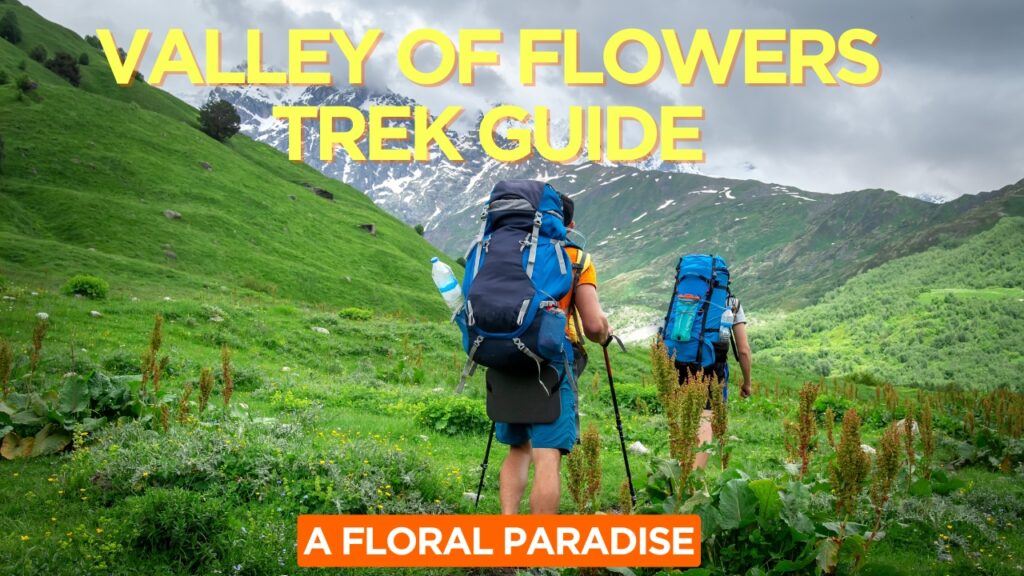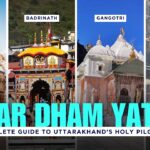Table of Contents
Valley of Flowers Trek Guide
The Valley of Flowers National Park, highly renowned for its natural beauty, is the 2nd Zone of Nanda Devi Biosphere Reserve and is located in the Western Himalayas. The invention of this valley happened incidentally by two British mountaineers named R.L. Holdsworth and Franks S. Smythe in 1931 after the successful voyage of Mount Kamlet.
Valley of Flowers Trek falls in the district of Chamoli, Uttarakhand, India, offering intensifying beauty of nature. Generally Known as Bhyundar Valley, this national park is spreads over an estimated area of 87.50 square kilometer amid numerous alpine trees. Situated at an elevation ranging between 3,658 mts to 6,750 mts above sea level, the valley of flowers was acknowledged as National park of India in 1982 and now it becomes a UNESCO World Heritage Site. This valley is separated in to two parts by Pushpawati River flowing through it.
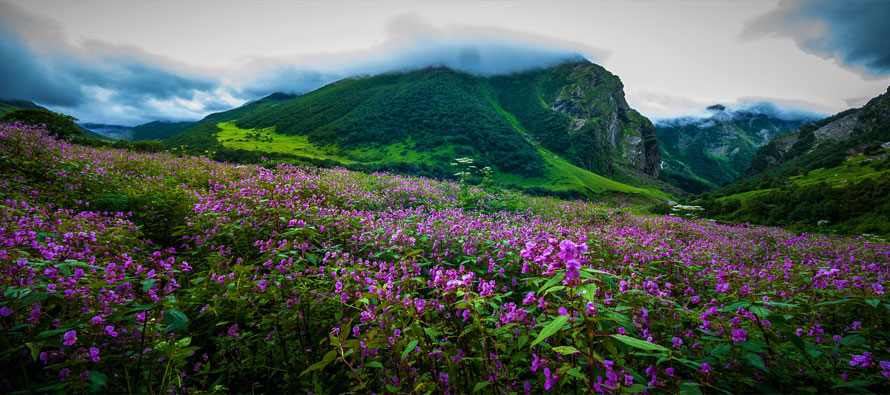
According to the legendary stories of Ramayana, it was believed that this is place where Lord Hanuman explored for Sanjivani Booti for Lakshman when he was wounded in the war by Indrajit. Presently, no arrangements and grazing are permitted in the national park. After following the easy trek of 17 km from Joshimath, one can arrive at the Valley-of-flowers. The trek begins from a place named Govindghat, which is small town near to Joshimath.
Here at Valley of Flowers Trek, you will find many cascading waterfalls and varied flora and fauna that enhance the beauty of this region. The untouched and pure beauty of this National Park has always attracts nature lovers, botanists and adventure enthusiasts. Open from month of June to October, Valley of Flowers National Park is the home of few rare animals such as Brown bear, snow leopard, Asiatic black bear and brown bear. Along with the beautiful lush green environment this valley also possesses more than 500 species of different wild flowers of exceptional design and colors.
The Valley of Flowers is abode of variety of wide ranging animals such as red fox, mouse hares, red fox, Bahrals, langurs, and serows. Except this, the valley is being occupied by numerous birds for example snow pigeons, Himalayan snow cocks, Himalayan golden eagles, snow partridges, and griffon vultures is assumed as a bird’s paradise.
Located at a distance of 13 kms from Govindghat, Ghangaria is the end human territory hub on the way to this National Park. It is a picturesque small town situated at an elevation of 3046 meters above sea level. The area remains completely enclosed with thick sheets of snow during winters and with flourishing flowers from June – October. This comprehensive guide from uttarakhand.tours. Trek Itinerary with trek to Valley of flowers to our expanded packages that are more and more inclusive, keep track of the details before you book.
What is Valley of Flowers Trek?
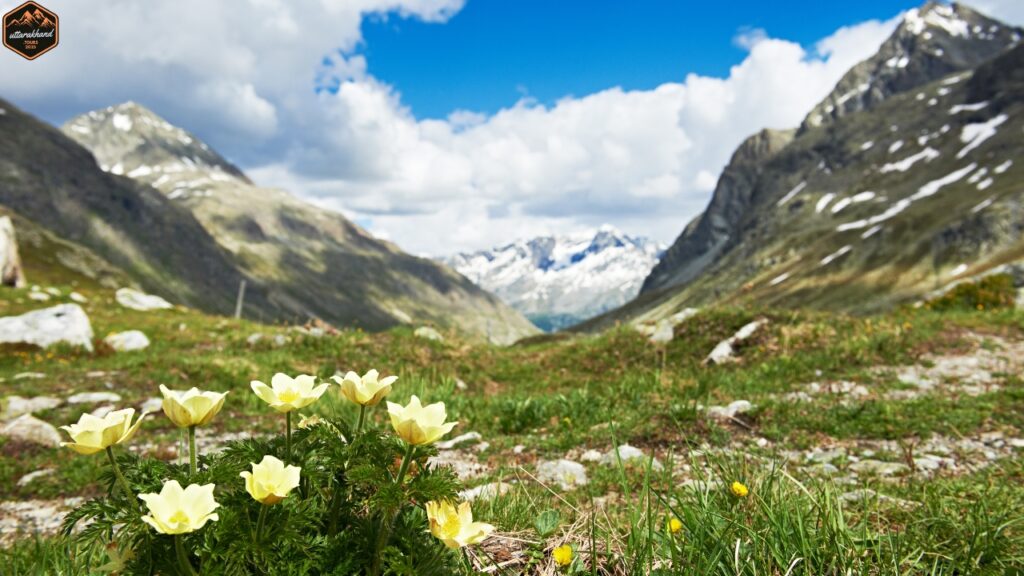
The Valley of Flowers Trek is a moderate to difficult Himalayan trek to the Valley of Flowers, a beautiful national park. This paradise for flower lovers which was found in 1931 by British mountaineer Frank S. Smythe who described it as “land of the gods” in his book The Valley of Flowers became famous worldwide.
It was designated a national park in 1982 and a UNESCO World Heritage Site in 2005 and is a biodiversity hotspot, home to endangered species like the snow leopard and the Asiatic black bear. The trek starts at Govindghat, passes through Pulna village and arrives at the valley, offering views of peaks including Nilgiri Parbat and Rataban.
The hike is 16 kilometers one way (32 kilometers return) and is open from June to October, with the best time to see flowers being from mid-July to mid-August. Altitudes range from 1,800 meters at Govindghat to 3,658 meters at the valley’s highest altitude, so moderate fitness is needed. This guide is your ultimate handbook for organizing memorable and the best treks of Uttarakhand in 2025.
History and Ecological Importance
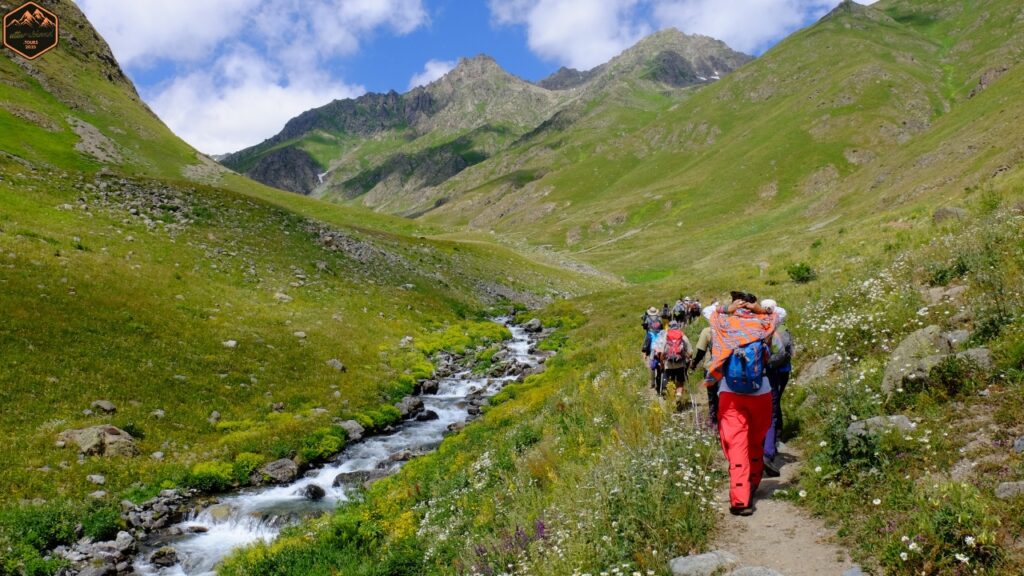
The Valley of Flowers, hidden in the Chamoli and Uttarkashi district of Uttarakhand, is an alluring mixture of historical heritage and natural beauty. This West Himalayan beauty was first introduced to the rest of the world in 1931 by English mountaineer Frank S. Smythe, who called it a “fairyland” and “a place where the gods would live” in his book The Valley of Flowers. His search revealed a great secret of nature, a land so mystical and satisfying that it has become a global phenomenon of otherworldly perfection.
Local mythology even ties the valley to the Ramayana, with Hanuman having brought the Sanjeevani herb to restore Lakshmana to life behind the rocky edifice of the Rambara. This sacred story has drawn trekkers, pilgrims, and adventurers for ages, and this endows the trail with a cultural magic. Declared a national park in 1982 and listed as a UNECO World Heritage Site in 2005, the valley is proof of historical and ecological significance standing the test of time.
In terms of flora, the Valley of Flowers ecologically is a temperate/ alpine part of the Western Himalayas, and the valley is home to many plant species such as the brahma kamal, the blue poppy and the cobra lily. It’s home to more than 500 species of wildflowers, including the rare Brahma Kamal—Uttarakhand’s state flower—and the striking blue poppy, which bloom in spectacular colors from June to October.
In addition to its floral bounty, the valley has been home to endangered fauna like the snow leopard, Asiatic black bear and Himalayan musk deer, basking in its primeval alpine meadows and glacial rivulets. Conservation is so important to maintaining this paradise in nature that it has been protected from development through to today. It’s this pledge that has attracted botanists interested in researching its rare flora, photographers wanting to capture its scenic beauty and eco-travellers looking for an eco-friendly holiday.
With the UNESCO badge, it has gotten international standing and makes this trek a notch higher in the portfolio of Valley of Flowers Trek 2025 a prime trekking destination. This living combination history, spirituality and ecological diversity never cease to leave the visitors awestruck, consequently representing an indispensable natural treasure nestled in the lap of Himalayas.
Best Season for Valley of Flowers Trek
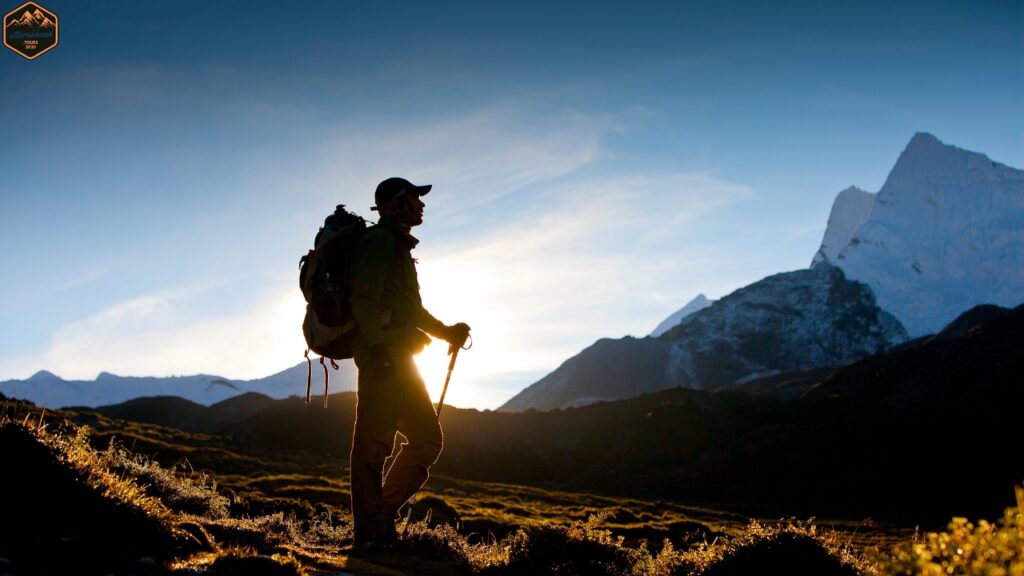
June to October is the best season for the Valley of Flowers Trek, with its peak flowering season from mid- July to mid-August when most of the flowers are in their full bloom making India Valley of Flowers the most colorful national park you will ever see. The temperature during these months is between 7°C and 15°C, making it a perfect time for the trek. If you want to avoid the crowds, then check out June and September (10°C–20°C), and October is also a great time to visit as it brings autumn colours and less flowers but beautiful foiliage.
Skip July and August, with monsoon season, and November to May, when the valley closes for snow (you should check with Uttarakhand Tourism for updates). The shoulder seasons offer the right blend of both safety and scenery.
How to reach Valley of Flowers Trek
Starting Point: Govindghat
The journey of the Valley of Flowers Trek begins in Govindghat, 273 km from Dehradun and 300 km from Delhi. Here’s how to get there:
By Road: 10-12 Hrs from Rishikesh or Haridwar to Govindghat by Bus and Taxi. Book via Uttaranchal Roadways.
By Train: Closest station is Rishikesh (ticket can be booked from IRCTC) and then taxi or bus.
By Air : Jolly Grant Airport, Dehradun (250 km) is the nearest airport, which has scheduled services to Delh. Check IndiGo for flights.
Trek Route Details
Day 1: Govindghat to Ghangaria (13 km, 5-6 hours): A moderate ascent through forests and along the Pushpawati River.
Day 2 : Trek from Ghangaria to Valley of flowers and back (10 kms trek to and fro/ 4 – 5 Hours) : Visit the valley of flowers.
Day 3: Govindghat (13 km, 5 to 6 hours) : Return to the baseruption and proceed to Govindghat.
Total distance is 36 km, elevation gain 1,800 meters. You can find here porters, mules and guides at Govindghat.
What More to Do on the Valley of Flowers Trek
Flower Spotting
Enjoy guided walks to see some of over 500 species, including the Brahma Kamal and blue poppy.
Wildlife Watching
Look for snow leopards, musk deer and monal pheasants.
Photography
Shoot the valley’s vibrant blooms and Himalayan vistas.
Hemkund Sahib Detour
A 6-kilometer trek from Ghangaria takes you to this Sikh shrine located at 4,329 meters.
Nature Meditation
Immerse yourself with the serene environment, allow for some mindfulness.
Nearby Attractions
Valley of Flowers Trek – Valley of Flowers is combined with blissful sightseeing destinations in a blend of spiritual, cultural and adventure packed set common in this part of the country. These locations add to your treck and let you explore even more.
Hemkund Sahib
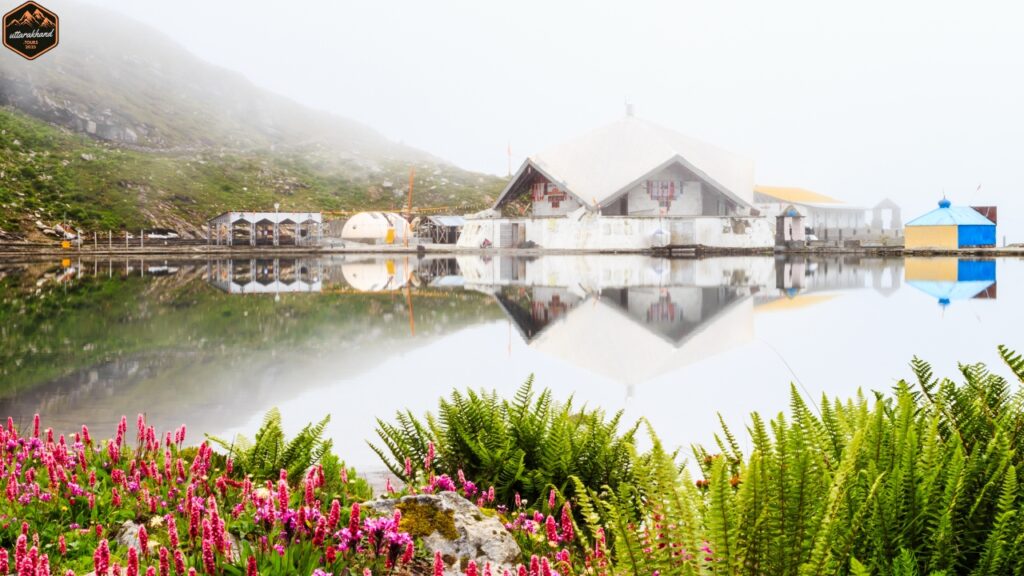
Hemkund Sahib, lying at an elevation of 4329 on the Shatrasma mountain, just 6 km from Ghangaria in Chamoli district, is a sacred Sikh shrine, the walls around which are now covered with snow and surrounded by seven mountain peaks, each of which is covered with snow, including Hathi Parbat and Nilgiri.
The star-shaped Gurudwara, just beside a glacial lake called Hemkund (which literally translates to “Lake of Snow”) is said to be the location of the meditation by Guru Gobind Singh Ji in one of his past lives. This trek to Hemkund, accessible from June through October, is arduous but rewarding, offering breathtaking views and a spiritually charged setting. The cold, clean waters are ideal for visiting, bathing and performing the early morning and evening prayers so its a magnet for pilgrims and trekkers.
Badrinath Temple
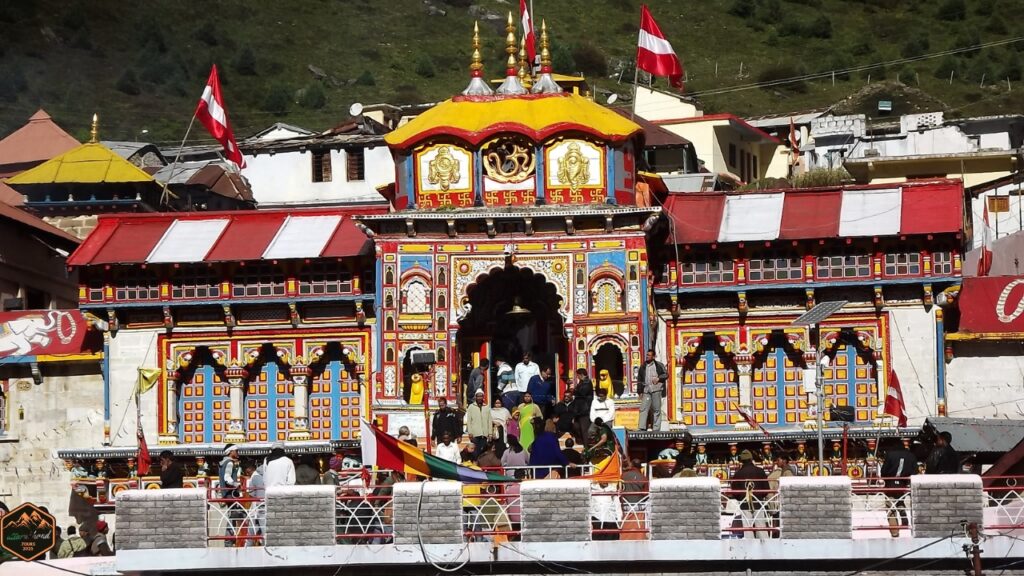
25 km further from Govindghat is the Badrinath Temple which is one of the Char Dham of India and the distance is same. Sitting at a height of 3,133 meters and nestled on the lap of Nar and Narayan ranges, Adi Shankaracharya founded this old temple in the 8th century.
The black stone image of Lord Vishnu, lying in the Alaknanda River, is the central one and is surrounded by 15 more idols. Open between May and November, it provides hoppers with early morning and evening aartis of the Lord. There’s a convenient Tapt Kund hot spring nearby, adding a therapeutic element to this ideal spiritual side trip from your trek.
Joshimath
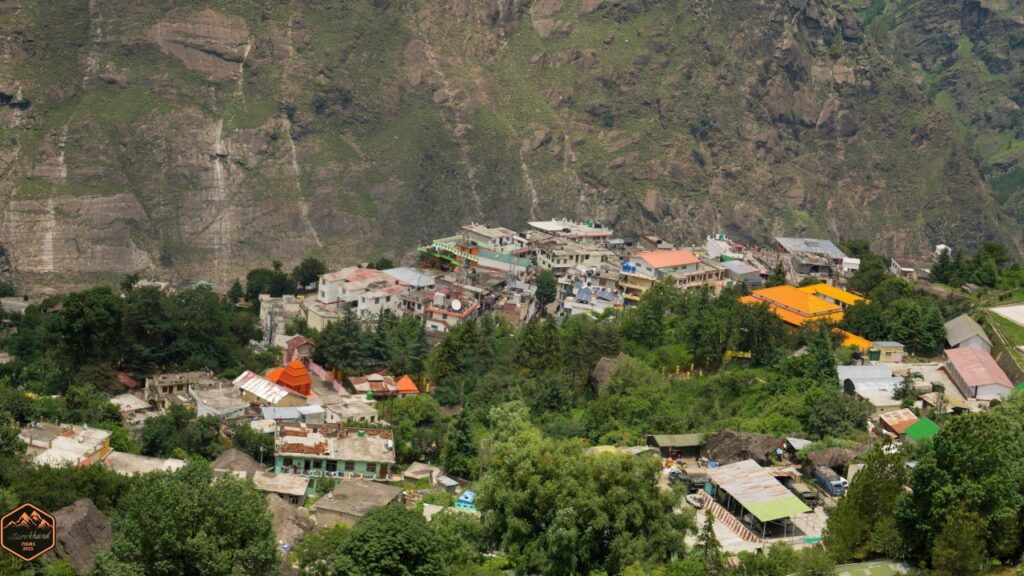
Located at 1,890 meters Joshimath is at a distance of 23-km from Govindghat and is the winter seat of the Badrinath idol. Established by Adi Shankaracharya, it is one of the four cardinal mathas (monastic institutions) in India. This busy town is a favorite among the adventure seekers and trekkers and offers gorgeous views of the Nanda Devi and Trishul peaks, apart from being a gateway to Auli. Tourists can visit the Narasimha Temple, dedicated to Lord Vishnu’s fourth avatar, and the Shankaracharya Math. Joshimath also acts as a hub for adventure treks, Pangarchulla trek, Kuari Pass, and Auli, and all temples and religious destinations like Badrinath, which is an hour’s drive from Joshimath.
Auli
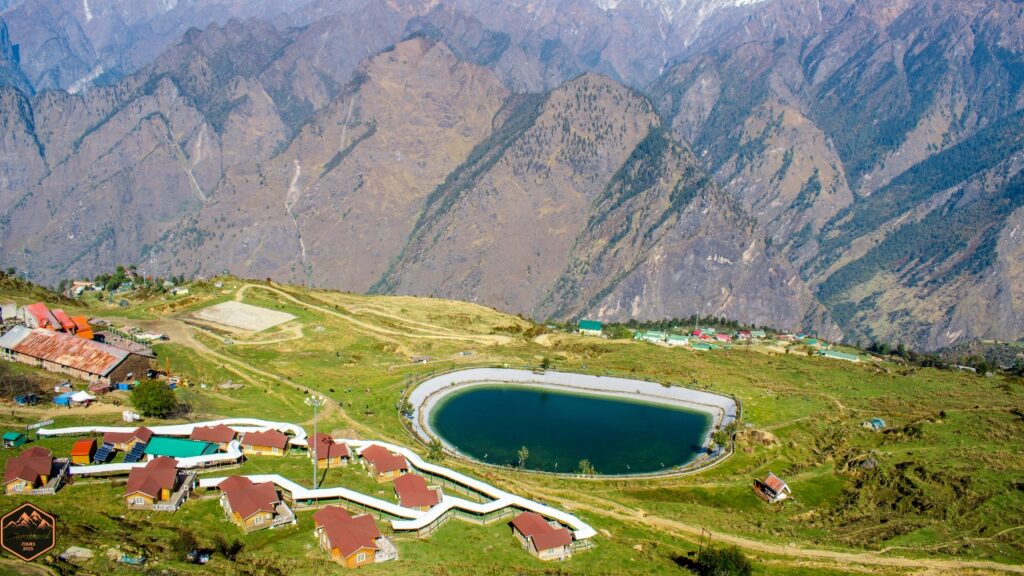
Auli is Uttarakhand’s best ski and paragliding destination, at 3,050 meter and a distance of around 40 kms from Govindghat. Dubbed the “skiing capital of India,” it has panoramas of towering peaks such as Nanda Devi, Kamet and Mana Parbat. 4 km ski-run maintained by Garhwal Mandal Vikas Nigam (GMVN) which is a popular spot amidst skiing enthusiasts during December to March. The summer season is best for paragliding and trekking, as the Asia’s longest cable car ride from Joshimath adds some flavor to it, as well. With its apple orchards and oak forests, Auli is appealing all year.
Govindghat
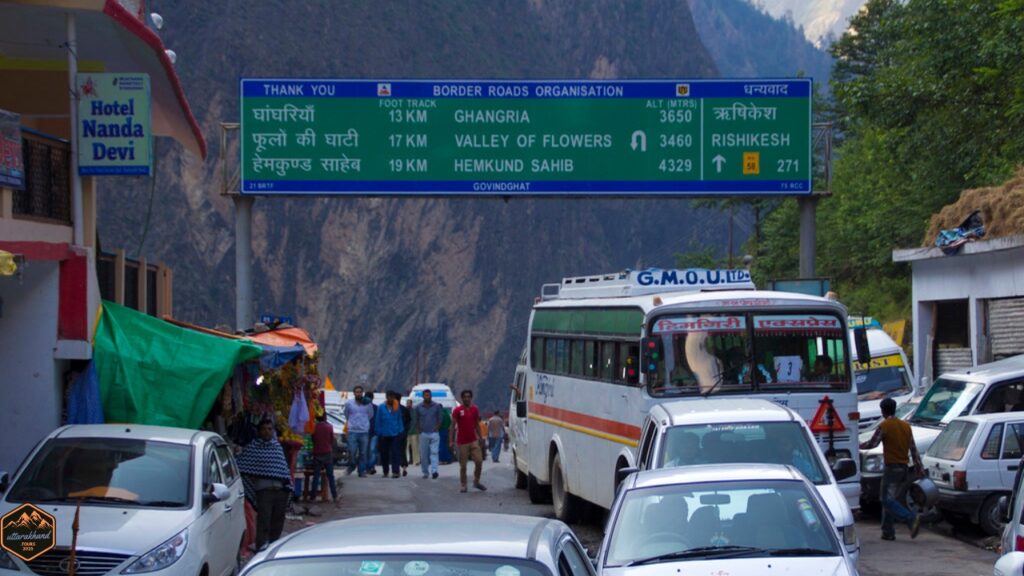
The start of the trek at Govindghat, situated 273 km away from Dehradun is a charming base camp. At 1,800 meters on the emerald green Alaknanda River, it serves as a base for trekkers en route to the Valley of Flowers and Hemkund Sahib. Basic guesthouses, trekking gear stores and a checkpost for permits are available in the village. Quiet riverbanks and a confluence of the Alaknanda and Lakshman Ganga Rivers provide a peaceful pit stop. It’s also a hub for other Himalayan treks, so it’s a smart place to play your Uttarakhand trekking itinerary from.
Pulna Village
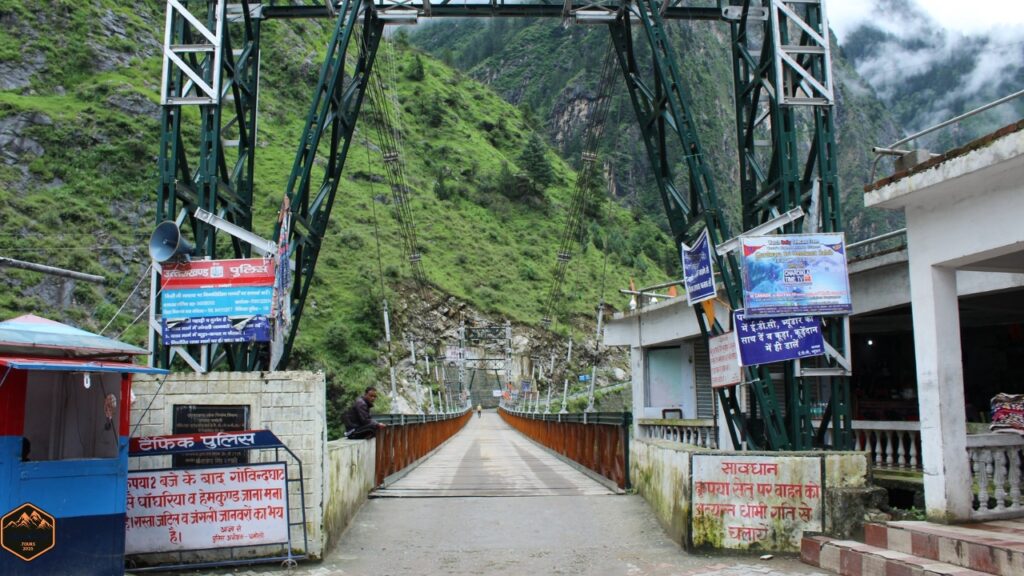
Un 4 km à pied abs Govindghat, le Pulna Village (920) est un charmant hameau en ~ 1 900 m où nous donnent un aperçu de la vie rurale Garhwali. Situated next to the Pushpawati River, it boasts of traditional stone houses, terraced fields and a charming local populace. Hikers usually stop by at this place to take a rest, savor homemade food, meet the inhabitants who tell tales of the local legends and folklore. The beautiful sight, including a view of surrounding hills, is a relief and sight immersion, in your way to Ghangaria.
Mana Village
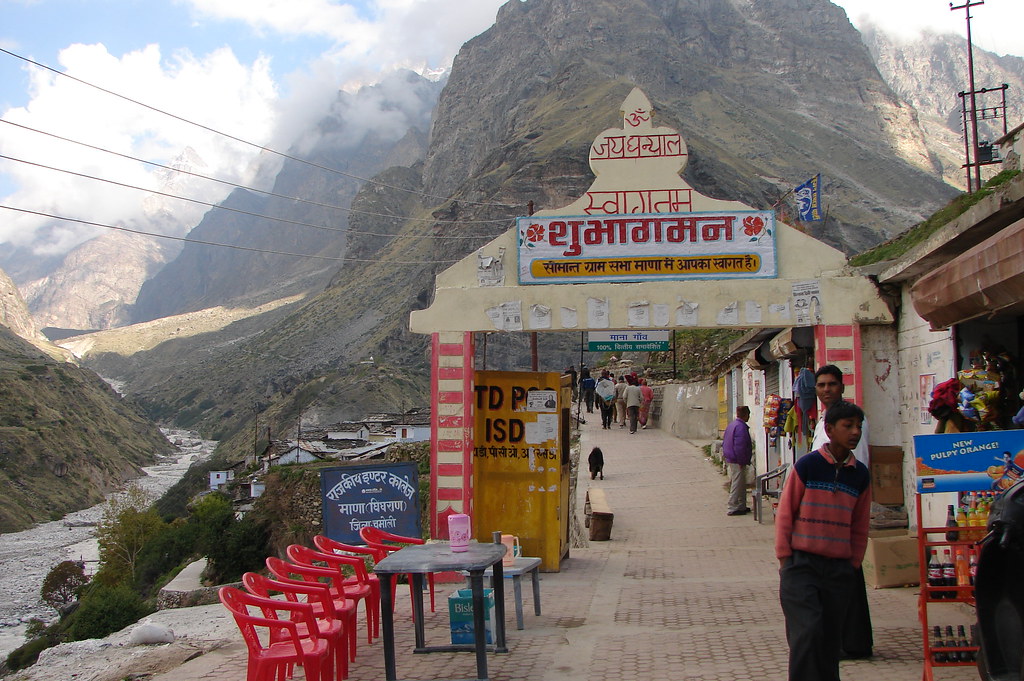
18: Mana Village – 3,200 m Mana village at 2000ft 28km from Govindghat, is the last village of India on the Tibet Border which is inhabited by the Bhotia tribes. It is famed for its Indo-Mongolian lineage and is a live museum with its stone houses and ancient caves. Its attractions include the Vyas Gufa where the sage is believed to have written the Mahabharata and the Ganesh Gufa where the same god, Lord Ganesh, transcribed it. The Saraswati river meets the Alaknanda at this confluence, which adds mythological and scenic interest, and provides a rewarding visit post-trek.
Nanda Devi National Park
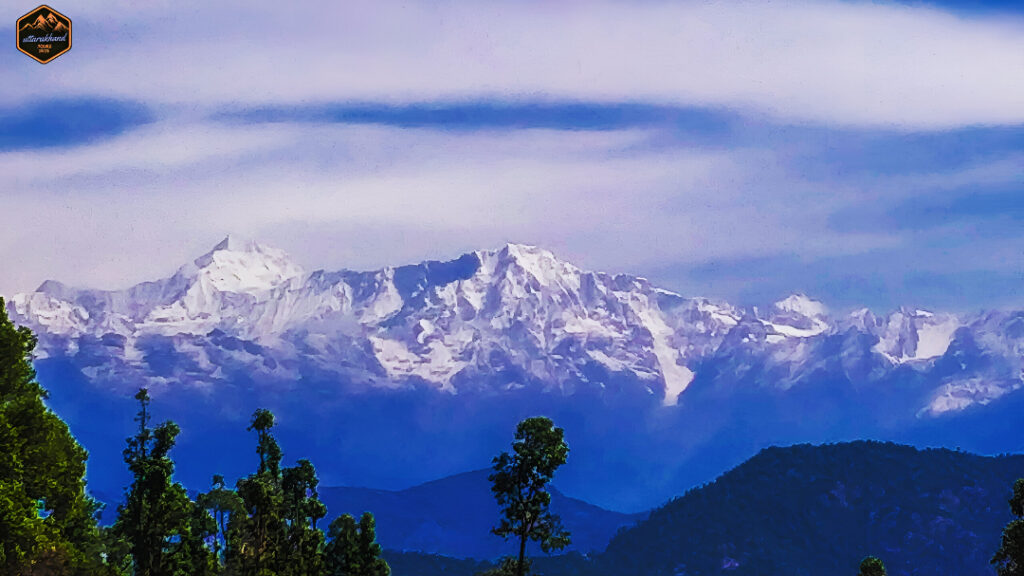
At Nanda Devi National Park, another Unesco World Heritage Site, some 50 km from Govindghat, India’s second highest mountain, the 7,816m Nanda Devi peak, takes pride of place. Reached by a difficult trek from Lata Village, it’s a refuge for rare species including the snow leopard and the blue sheep. The park’s challenging topography and glacial geology make for an exhilarating outback trek for the seasoned hiker. Centrally located by the Valley of Flowers, the Hemkund with its many trekking trails represents a good holiday spot in the hills.
Rudranath Temple
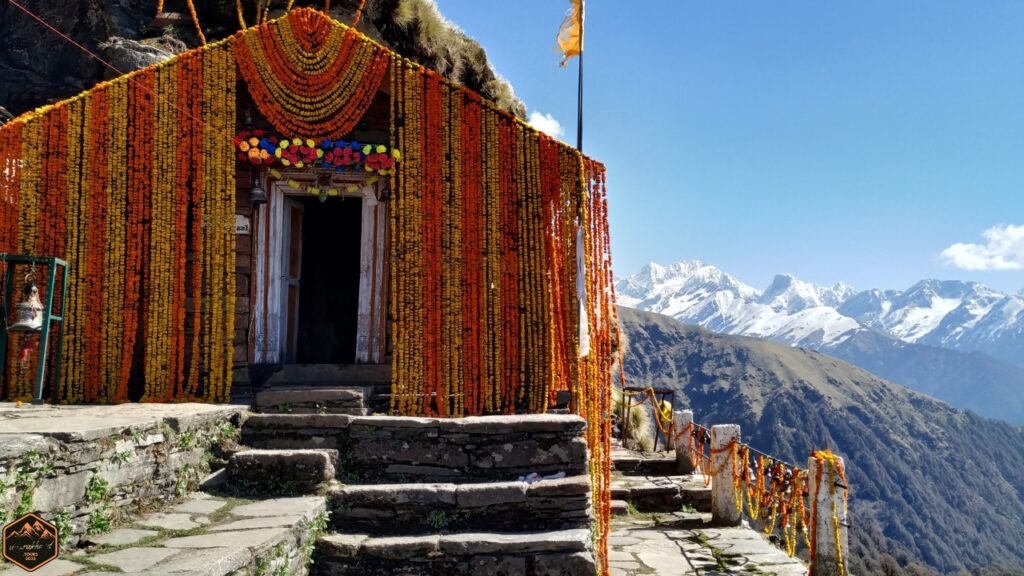
Rudranath Temple Rudranath Temple, situated about 60 km from Govindghat in the Garhwal Himalaya, is one of the five Panch Kedar shrines devoted to Lord Shiva. At 3,600 meters, it can be reached by a 20 km hike from Sagar Village, traversing dense forests and meadows. The tranquil environment of the temple, nestled amidst scenic beauty that include a panoramic view of the Trishul and Nanda Devi peaks, is spiritually rejuvenating. Religious followers thunder in to celebrate the annual festivity in June offering that touch of culture to your Valley of Flowers Trek 2025 adventure.
Chopta
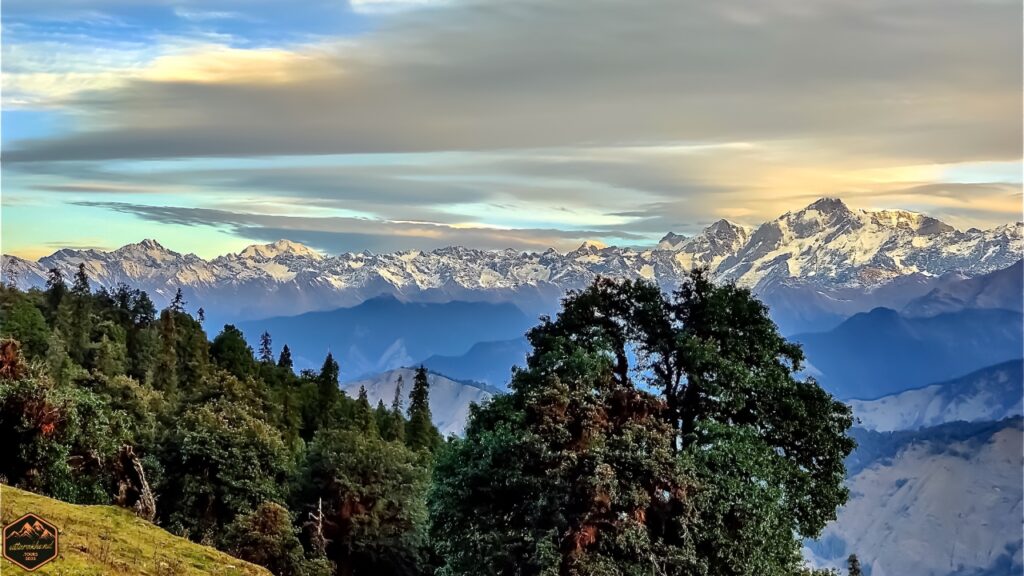
Chopta is located at an altitude of 2,680 meters and is at a distance of 70 km from Govindghat and is also known as the “Mini Switzerland of Uttarakhand.” It’s the starting point for the Tungnath Temple hike (three and a half kilometers), the highest Shiva temple in India at 3,680 meters. Its rolling meadows, rhododendron forests, and glimpses of the Chaukhamba peak are a medley that photo enthusiasts and nature lovers would want to capture. Cool and accessible by road, Chopta is an ideal point to lounge or detour.
Important Tips for Valley of Flowers Trek
Physical Preparation
Build up 1–2 months in advance with cardiovascular and strength training to combat elevation for the Valley of Flowers Trek.
Permits
Purchase an entry permit online or at Govindghat (₹150 for Indians, ₹600 for foreigners, through Uttarakhand Ecotourism) for the Valley of Flowers Trek.
Gear List
Trekking shoes, warm clothes, rain coat, first aid, and dry fruits/chocolates as snacks for the Valley of Flowers Trek.
Accommodation
There are guesthouses or camps in Ghangaria (Book through Holidify); no overnight stays are allowed in the valley.
Precautions
Acclimatize your body at Govindghat before the Valley of Flowers Trek and walk with a guide and keep an eye on the weather.
Ecofriendliness
Remember to adhere to “leave no trace” rules and avoid littering or wandering off on to unmarked trails.
Cost Estimates for the Trek
Budget
₹5,000 — ₹10,000 for per person (Public transport, simple stays, self-catering) on the Valley of Flowers Trek.
Midrange
₹12,000 to ₹20,000 (taxis, guesthouses, guided tours) on the Valley of Flowers Trek.
Luxury (helicopter to Govindghat, premium hotels, packages)
₹25,000–₹40,000 for the Valley of Flowers Trek.
Why to Choose the Valley of Flowers Trek?
The Valley of Flowers Trek 2025 is a perfect blend of adventure, nature, and culture in a UNESCO World Heritage listed paradise. Its varied flora, fauna, and spiritual places such as Hemkund Sahib and Badrinath make it a hit with trekkers, photographers, and pilgrims. It is just 44 km from the holy town of Badrinath, and lies in the twine of peaks of Bhagirath – Hathi, Ghoda and Parvat.
Trek route – Ascent – 13 km drive,13 km trek. Day 01: Rishikesh / Haridwar to Joshimath (247 km/8½ hrs) 260 km drive: From Rishikesh early in the morning. Rudraprayag, Chamoli, and Vishnuprayag, situated a little ahead of Rudraprayag, are going to be visited en route. The valley peak trek season lets you experience what’s a dream trek for many, making it the top region for Uttarakhand trek with uttarakhand.tours.
Final Thoughts
Valley of Flowers Trek 2025 is your passage to the floral paradise of Uttarakhand providing picturesque surroundings, exotic flora and spiritual enlightenment. July 05, 2025, 05:21 PM IST is when the season is at its peak and let us make the most of it. Permits are a challenge to secure so plan carefully and hike from June to October for the best experience.
You can take a detour to kanatal or visit nearby attractions as well, or simply embark on a photowalk of the flowers of the valley or just let the picture be taken by the uttarakhand. tours are bound to make an impression. Make sure to book your trek and experience this Himalayan gem yourself!”
Valley of Flowers Trek FAQs
When is the best time to travel to the Valley of Flowers Trek?
Blossoming period (and peak) is between July and September with more than 600 of alpine flowers in full bloom. While the park technically opens on June 1, you’ll get the best of the bloom-age between mid-July and early August.
When are they open and what are the opening times?
The Valley of Flowers National Park is open soon after June1 to end of October31 of each year. Gates open at 7:00AM, last entry is usually around 12:00–2:00PM, and you must exit the forest by 4:00–5:00PM.
What is the entrance fee and permit process for Valley of Flowers Trek?
For 2025:
₹200(Indian Adults) ₹800(Foreign tourists) ₹100(Students and senior citizens) Concessions for children and differently abled.
You will need to have a valid permit from the Forest Department at Ghangaria/Govind Ghat checkpoint (2 passport size photographs and Photo ID required).
How difficult is the trek? Is it beginner-friendly?
The trip is deemed easy to moderate, making it beginner appropriate for those who are in fair condition.
Govind Ghat → Ghangaria (~13 km) Consistent incline is there_female_only_trek
Ghangaria → Valley (~5-6 kms) Easy trail.
The entire journey (Valley + Hemkund) typically takes 4–7 days.
Is a guide necessary?
While the trail is well marked, it’s a good idea to hire a guide for route finding and safety, and to learn the names of flowers that grow in the area. But most trekkers are doing it unguided with no problems.
Are children and older adults able to do the trek?
Yes, given reasonable fitness:
Thanks to The Times of India+4Discover with Dheeraj+4Rayvia+4, on how children above 7–10 years are increasingly given
Seniors can also do it, but for some mules or porters are preferable.
Can I get a porter, mule, or helicopter ride?
On the spot porters, mule for luggages (limit 10kg).
Helicopter service from Govind Ghat to Ghangaria fly at around ~₹3,500/ride but most of them prefer walking.
What equipment will I need for the trek?
The list includes: waterproofed hiking shoes, warm waterproof layers (jackets, wool shirts, rain gear), sun protection, first-aid kit, snacks, additional batteries, binoculars for wildlife.
What about our ability to use mobile or find ATMs?
Connectivity usually ends at Govind Ghat or Ghangaria, to have BSNL or Idea may work in patches.
ATMs are not available after Govind Ghat or Joshimath.Carry enough cash.
Is the Monsoon trek safe to travel?
The peak season of July and August, when flowers are in bloom, is also monsoon season and hence prone to landslides and roadblocks.
We suggest going by late August–early September when both the weather and the blooms will be more in your favour.

